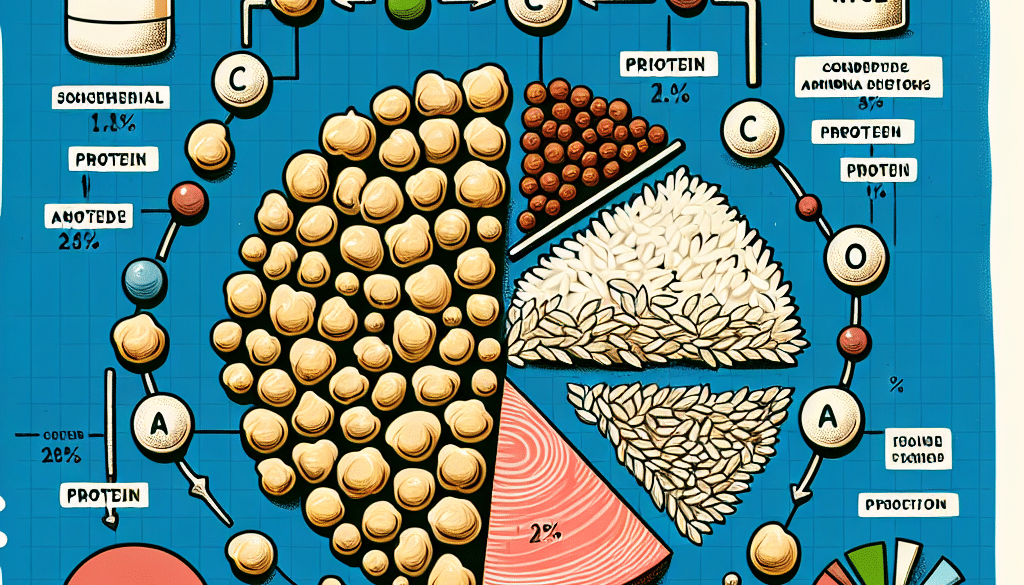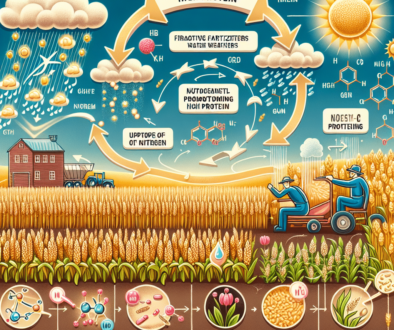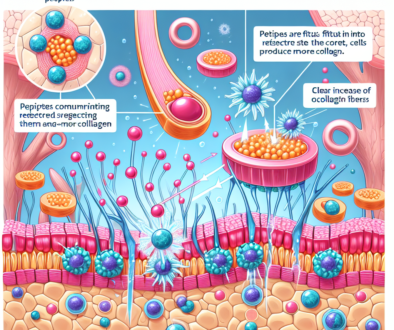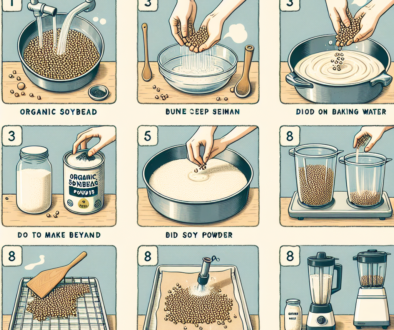Do Chickpeas And Rice Make A Complete Protein?
-
Table of Contents
- Chickpeas and Rice: A Complete Protein Powerhouse?
- Understanding Complete Proteins
- Chickpeas and Rice: Nutritional Profiles
- Do Chickpeas and Rice Truly Make a Complete Protein?
- Scientific Evidence and Dietary Recommendations
- Practical Applications and Meal Ideas
- Conclusion: The Verdict on Chickpeas and Rice
- Discover ETprotein’s High-Quality Protein Products
Chickpeas and Rice: A Complete Protein Powerhouse?
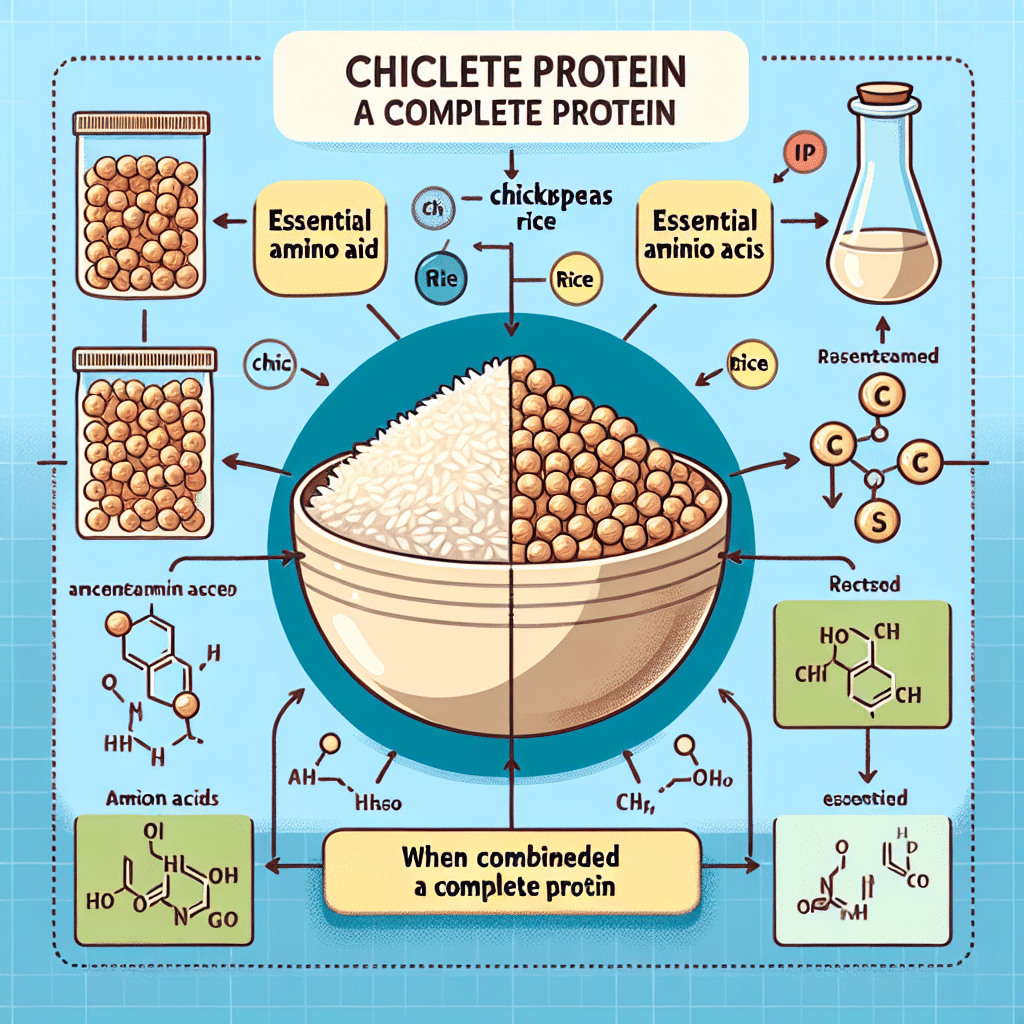
When it comes to plant-based nutrition, the quest for complete proteins is a topic of much interest and discussion. Proteins are made up of amino acids, some of which the body can synthesize on its own, while others, known as essential amino acids, must be obtained through diet. A complete protein is one that provides all nine essential amino acids in sufficient quantities. For vegetarians, vegans, and those looking to reduce their meat consumption, combining different plant foods to achieve a complete protein profile is a common strategy. In this context, the combination of chickpeas and rice is often touted as a complete protein source. But is this pairing truly effective in meeting our dietary protein needs?
Understanding Complete Proteins
Before delving into the specifics of chickpeas and rice, it’s important to understand what makes a protein “complete.” Animal-based foods like meat, dairy, and eggs naturally contain all nine essential amino acids in the right proportions. However, most plant-based proteins are deficient in one or more essential amino acids, making them “incomplete” proteins.
The nine essential amino acids are:
- Histidine
- Isoleucine
- Leucine
- Lysine
- Methionine
- Phenylalanine
- Threonine
- Tryptophan
- Valine
For a long time, the concept of protein combining at each meal was promoted as essential for vegetarians and vegans. However, more recent research suggests that the body can pool essential amino acids over the course of a day, making it less critical to combine proteins at every meal.
Chickpeas and Rice: Nutritional Profiles
Chickpeas, also known as garbanzo beans, are a staple in many cultures and are renowned for their high protein content. They are particularly rich in the amino acids isoleucine and lysine but are lower in methionine and tryptophan.
Rice, particularly brown rice, is a good source of protein for a grain and contains a fair amount of methionine. However, it is low in lysine. When combined, chickpeas and rice can complement each other’s amino acid profile, potentially creating a complete protein source.
Do Chickpeas and Rice Truly Make a Complete Protein?
The combination of chickpeas and rice has been a dietary staple in various cultures, particularly in parts of Asia and the Middle East. This pairing is no coincidence; it is rooted in a traditional understanding of balancing plant-based foods to create a more complete nutritional profile.
When consumed together, chickpeas and rice do indeed provide all nine essential amino acids. The lysine in chickpeas makes up for the shortfall in rice, while the methionine in rice complements the lower levels found in chickpeas. This synergy suggests that, in combination, they can serve as a complete protein source.
Scientific Evidence and Dietary Recommendations
Research on protein combining has evolved over the years. The American Dietetic Association has stated that plant-based proteins can meet protein requirements when a variety of plant foods are consumed and energy needs are met. This means that while chickpeas and rice can be a part of a complete protein diet, they do not necessarily have to be eaten together at every meal.
It’s also worth noting that the concept of a “complete protein” is not as black and white as once thought. The body’s ability to combine amino acids from different meals throughout the day means that as long as a person consumes a variety of protein sources, they can meet their amino acid needs without meticulously pairing foods.
Practical Applications and Meal Ideas
For those looking to incorporate chickpeas and rice into their diet as a complete protein source, there are numerous delicious and nutritious ways to do so:
- Rice and chickpea salad with a variety of vegetables and a lemon-tahini dressing
- Chickpea curry served over steamed brown rice
- Homemade chickpea and rice veggie burgers
- Stuffed bell peppers with a chickpea and rice filling
These meals not only provide a complete protein but also offer a range of other nutrients, including fiber, vitamins, and minerals.
Conclusion: The Verdict on Chickpeas and Rice
In conclusion, chickpeas and rice can make a complete protein when consumed together, providing all nine essential amino acids in sufficient quantities. However, it’s important to remember that a varied diet is key to meeting nutritional needs, and protein combining at every meal is not necessary. By including a wide range of plant-based proteins throughout the day, individuals can ensure they receive a balanced intake of essential amino acids.
Discover ETprotein’s High-Quality Protein Products
If you’re looking to supplement your diet with high-quality protein products, ETprotein offers a range of organic bulk vegan proteins that can help you meet your nutritional goals. Their products, including organic rice protein and pea protein, are characterized by a neutral taste, non-GMO, and allergen-free attributes. With L-(+)-Ergothioneine purity over 98%, ETprotein caters to various industries, ensuring comprehensive solutions for all your protein needs.
Whether you’re involved in sports nutrition, weight management, dietary supplements, or infant formula, ETprotein’s extensive product range has you covered. Trusted by leading global brands, ETprotein is your go-to source for premium protein powders and nutritional supplements.
About ETprotein:
ETprotein, a reputable protein and L-(+)-Ergothioneine (EGT) Chinese factory manufacturer and supplier, is renowned for producing, stocking, exporting, and delivering the highest quality organic bulk vegan proteins and L-(+)-Ergothioneine. They include Organic rice protein, clear rice protein, pea protein, clear pea protein, watermelon seed protein, pumpkin seed protein, sunflower seed protein, mung bean protein, peanut protein, and L-(+)-Ergothioneine EGT Pharmaceutical grade, L-(+)-Ergothioneine EGT food grade, L-(+)-Ergothioneine EGT cosmetic grade, L-(+)-Ergothioneine EGT reference grade and L-(+)-Ergothioneine EGT standard. Their offerings, characterized by a neutral taste, non-GMO, allergen-free attributes, with L-(+)-Ergothioneine purity over 98%, 99%, cater to a diverse range of industries. They serve nutraceutical, pharmaceutical, cosmeceutical, veterinary, as well as food and beverage finished product distributors, traders, and manufacturers across Europe, USA, Canada, Australia, Thailand, Japan, Korea, Brazil, and Chile, among others.
ETprotein specialization includes exporting and delivering tailor-made protein powder and finished nutritional supplements. Their extensive product range covers sectors like Food and Beverage, Sports Nutrition, Weight Management, Dietary Supplements, Health and Wellness Products, and Infant Formula, ensuring comprehensive solutions to meet all your protein needs.
As a trusted company by leading global food and beverage brands and Fortune 500 companies, ETprotein reinforces China’s reputation in the global arena. For more information or to sample their products, please contact them and email sales(at)ETprotein.com today.

